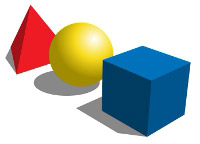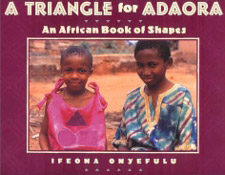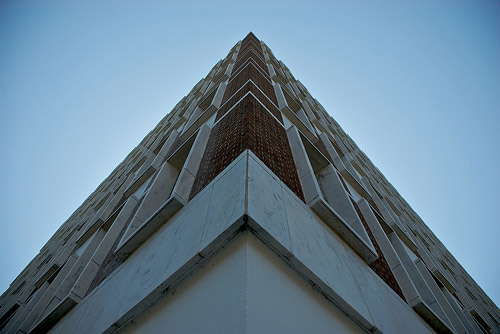Lesson: Shapes of Africa
 (Lesson courtesy of Kimberly Dorsey via HotChalk LessonPlansPage)
(Lesson courtesy of Kimberly Dorsey via HotChalk LessonPlansPage)
Grade Level: 1
Overview
In this lesson plan, students learn how to find shapes in their world. With the help of the children’s book A Triangle for Adaora by Ifeoma Onyefulu, which shares the experience of a young Nigerian girl as she looks for a triangle around her, students learn the basic shapes, then go looking for them in magazines. They then present their findings to the class as shape researchers. This lesson also incorporates cultural learning.
Geometry is a key element of engineering. Circles, squares, and triangles, among more complex shapes, make up every wall, tile, and structural element in architecture. Developing a good understanding of these shapes is pivotal to becoming a good engineer. An early introduction to shapes can give students a head start in science, technology, engineering, and math education.
Standards
* Mathematics – Standard 3
* Social Studies – Standard 3
Instructional Objective
Students will identify and recognize the words square, circle, and triangle. They will match these words to the corresponding shapes. Students will also learn about African culture in the process.
Motivation
Present the students with items that are familiar and interesting to them (e.g., pizza, a yo-yo, a book, etc.). Ask the students to say something about each object. Assuming that the students describe the object as things that you eat, play with, etc., further ask them to state what shape each object is.
Next, take out index cards which have the names of each shape on them. Hold up one card at a time and ask the students to read the words. Once the students have read each word (with guidance), ask them to match the words to the corresponding objects. After this is finished, practice reading each word as a group and discuss the properties of each shape (e.g., a triangle has three sides, a square has four sides, etc.).
 Materials/Resources Needed
Materials/Resources Needed
* A Triangle for Adaora by Ifeoma Onyefulu
* Different shaped items
* Three pieces of poster board
* Magazines
* Scissors
* Glue
* Index cards
* Chalkboard
* Chalk
Procedure
After finishing the motivation portion of the lesson, show the students A Triangle for Adaora and tell them it is a book about a girl who is searching for a triangle in Africa.
Show the students where Africa is on the map in relation to where they live. Then ask the students to look for all the shapes we discussed. Finally, ask the students to listen to hear the names of shapes that may be unfamiliar to them (i.e., crescent).
Read A Triangle for Adaora and point out all the different shapes in the story. Also, point out any cultural facts observed during the reading.
Break the students into three groups and pass out scissors, glue, poster board, and magazines. Then, ask each group to choose one shape for their poster. Ask one student in the group to write the name of their shape at the top of their poster. Then, hand out magazines to each group and help each group find one example of their shape in a magazine.

Students (try calling them “Shape Researchers” for added fun) will continue looking through magazines for their shape. They will then cut and paste the shapes onto their poster.
Each group will present their poster, featuring their shape research, to the class.
Follow-Up
For homework, students will be required to find different shaped items in their homes and will bring in one example to share with the class the following day.
Contributors
Kimberly Dorsey (email)
“Basic Shapes” by Mysid (Wikipedia Commons)
“A Triangle for Adaora” by Ifeoma Oneyefulu (Amazon)
“Triangles” by Keith B. Smiley (Flickr Commons)
Filed under: Class Activities, Grades K-5, Grades K-5, Lesson Plans
Tags: Class Activities, Curriculum, Lesson Plans, Mathematics, Teacher Resources








